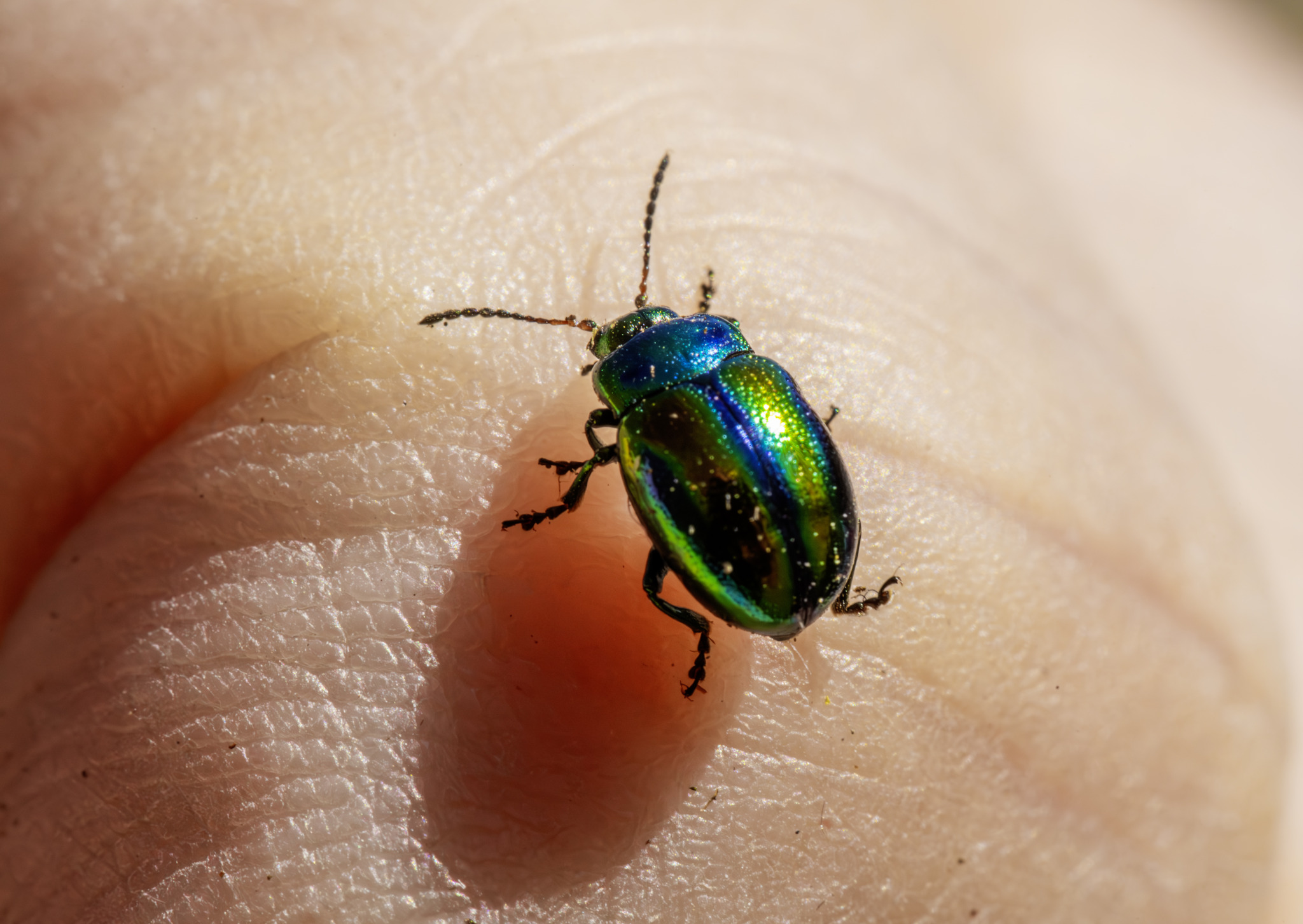The Dead-nettle Leaf Beetle (Chrysolina fastuosa) is a striking beetle species belonging to the family Chrysomelidae. Here are some key features and characteristics of the Dead-nettle Leaf Beetle:
- Appearance: Dead-nettle Leaf Beetles are small to medium-sized beetles with an elongated oval body shape. They have a metallic green or blue-green coloration on their upper surface, often with a coppery or golden sheen. The elytra (wing covers) may have black markings or spots, and the legs and antennae are typically black.
- Size: Dead-nettle Leaf Beetles vary in size, but they are generally around 5 to 8 millimeters (0.2 to 0.3 inches) in length.
- Habitat: Dead-nettle Leaf Beetles are commonly found in open habitats with abundant vegetation, including meadows, grasslands, gardens, and agricultural fields. They are often associated with plants in the mint family (Lamiaceae), particularly dead nettles (genus Lamium) and other herbaceous plants.
- Diet: Dead-nettle Leaf Beetles are herbivorous and feed primarily on the leaves of various plants in the mint family, including dead nettles, mint, sage, and thyme. They use their specialized mouthparts to chew through the leaves, leaving behind characteristic feeding damage.
- Life Cycle: Dead-nettle Leaf Beetles undergo complete metamorphosis, with four distinct life stages: egg, larva, pupa, and adult beetle. Females lay clusters of eggs on the underside of plant leaves, where the larvae hatch and feed on the foliage. The larvae develop through several instars before pupating and emerging as adult beetles.
- Behavior: Dead-nettle Leaf Beetles are diurnal insects that are active during the day. They are relatively mobile and can fly short distances if disturbed. Like many other leaf beetle species, they may exhibit defensive behaviors such as dropping to the ground or releasing chemical compounds when threatened by predators.
- Ecological Role: Dead-nettle Leaf Beetles play a role in plant-predator interactions and can influence the abundance and distribution of their host plants. While they may sometimes be considered pests in agricultural settings, they also serve as prey for various insectivorous animals and contribute to nutrient cycling and decomposition processes.
- Distribution: Dead-nettle Leaf Beetles are distributed across Europe and parts of Asia, including the British Isles, mainland Europe, and western Asia. They are relatively common and widespread in their range, although their populations may fluctuate in response to environmental factors and habitat conditions.
Overall, the Dead-nettle Leaf Beetle is a fascinating and visually striking beetle species valued for its ecological role and beauty. While it may occasionally be considered a pest in certain agricultural settings, it is an integral part of natural ecosystems and contributes to the diversity and balance of insect communities.
Visited 1,056 times, 10 visit(s) today
Views: 1523
Subscribe to the newsletter:
